8 Cabinet Joinery Techniques You Should Know About
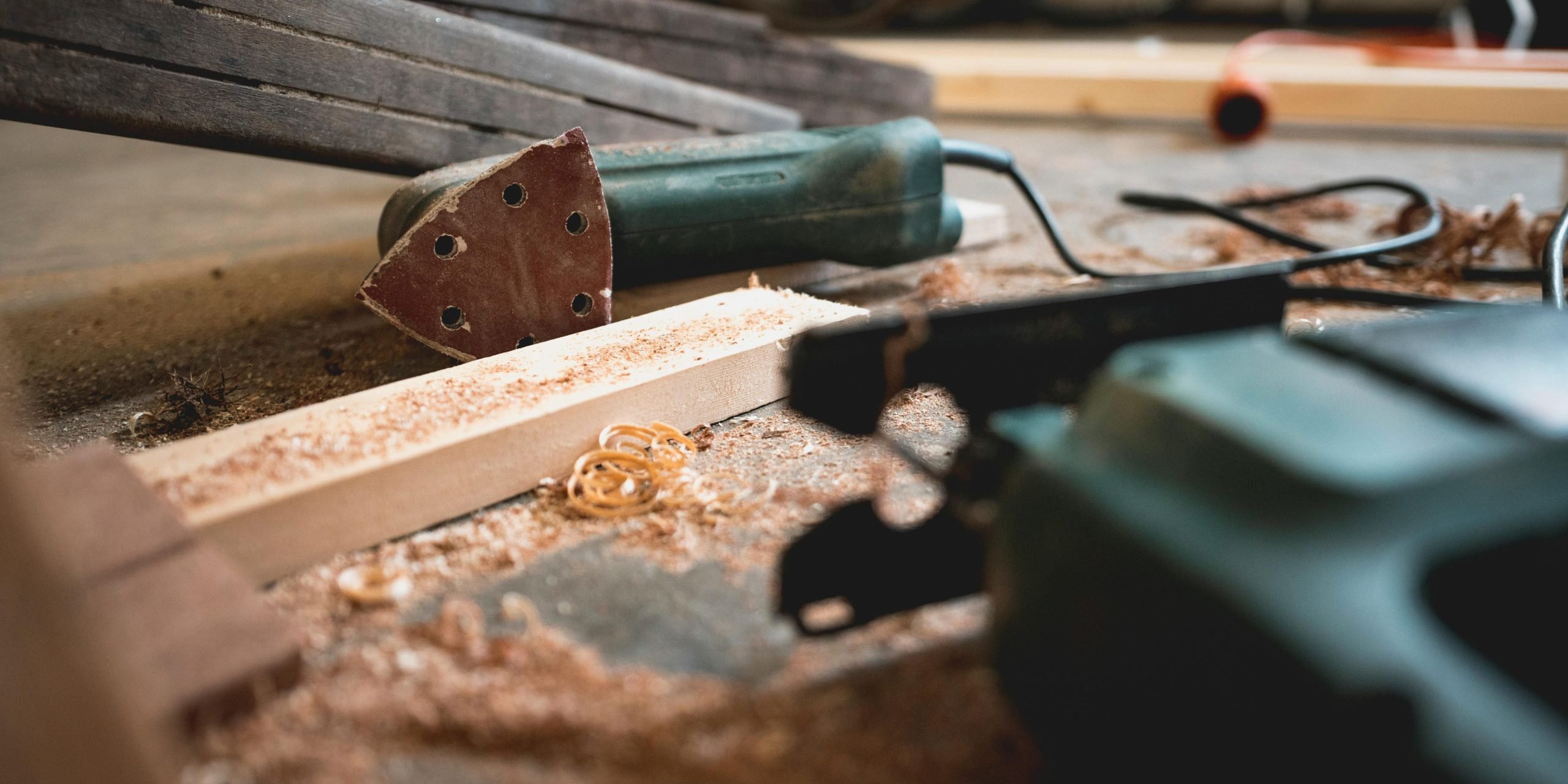
Cabinet joinery affects the strength, durability, and appearance of cabinets. Different techniques can improve the craftsmanship of the cabinet. These techniques range from traditional methods to modern innovations. Whether you’re a hobbyist or a craftsman, it’s good to know what these techniques are.
Some cabinet joinery techniques like dovetail are seen everywhere. Other techniques, like mortise and tenon, are more common to traditional woodwork. Some are more familiar than others. Which ones have you seen?
Cabinet Joinery You Need to Try
If you’re interested in learning these techniques yourself, check out the sidebar on the right to see some example photos and tutorial links. If you do try them out, give us a shoutout on Instagram or Facebook. We’d love to see what you did with them
Dovetail Joints
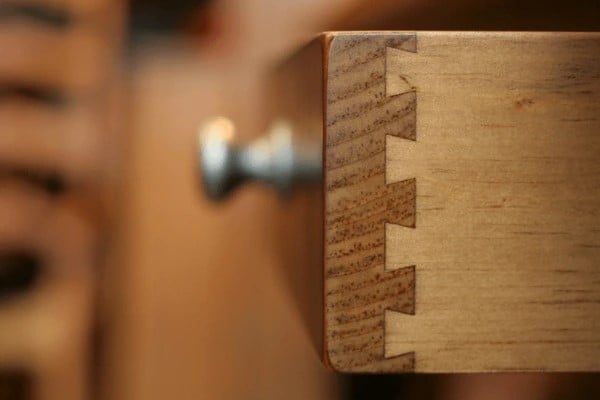
This joint is among the most iconic and attractive cabinet joinery techniques. It’s interlocking wedge-shaped projections that create a strong bond between pieces of wood. Dovetail joints are commonly used to make drawers. The unique design distributes weight evenly. This allows for thinner boards to be used in construction. It makes cabinets lighter and easier to use. Many cabinetmakers prefer it for durability and resistance to pulling forces.
Dovetail joints are seen in cabinets from Forevermark and US Cabinet Depot. It can look attractive and modern, but this technique actually predates written history. Evidence of dovetail joints have been seen in sarcophagi from 3000BCE. Don’t rush your antique furniture to the appraisers, though; dovetail joints didn’t show up in American and European craftsmanship till the 1600s.
There was little to no standard craftsmanship for dovetail joints during that time. However, the construction and style can tell you a great deal about a piece. Read more by searching for English Dovetail Joints or American Dovetail Joints.
Learn how dovetail joints are made by clicking here.
Mortise and Tenon Joints
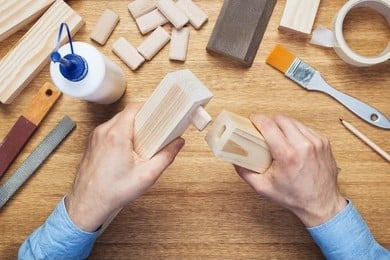
This joint is versatile and widely used in woodworking. It involves a projecting tenon on one piece of wood fitting into a mortise (hole) on another. Cabinetmakers use this joint for its ability to withstand heavy loads and resist lateral forces.
The mortise and tenon joint comes in various forms, such as through, blind, and wedged tenons. This adaptability allows craftsmen to tailor the joint to the functional and aesthetic demands of the piece. Additionally, the simplicity of the mortise and tenon joint ensures ease of assembly and repair.
The mortise and tenon joint has been around since the Neolithic period, over 7000 years ago! People in many different cultures around the world have used it. There’s some debate about the origins of the word “mortise.” It’s derived from either the French word mortaise or Arabic word murtazz, which means to cut a hole. Tenon is derived from the French word tenir, which means to hold.
Click here to learn how to make a mortise and tenon joint.
Biscuit Joinery
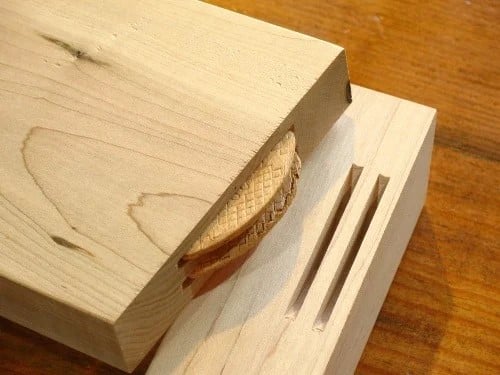
This technique uses small, football-shaped pieces and glue to join two pieces of wood. This technique is popular for its simplicity and efficiency. Craftsmen use biscuits for quick assembly.
This technique was invented by Hermann Steiner in 1955. Steiner was a Swiss cabinetmaker that founded the company Lamello AG.
For the average person, biscuit joints look rather odd. Learn how to make a biscuit joint by clicking here.
Dowel Joints
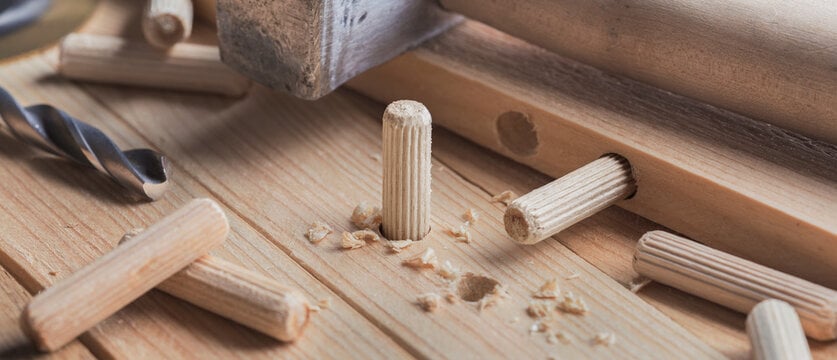
This technique align cylindrical rods with holes in two adjoining pieces of wood. This is a simple method used in mass-produced cabinets. It’s easy to make and provides decent strength.
Making items with dowel joints became popular during the early 19th century. The dowel was easy to make, and the joinery was easy for machines to handle. The only downfall to this joinery was its reliance on glue for the integrity of the join.
Advances in technology has improved the dowel joint. It remains one of the easier techniques for repair. Dowel joints are common in mass-produced furniture.
Pocket Hole Joinery
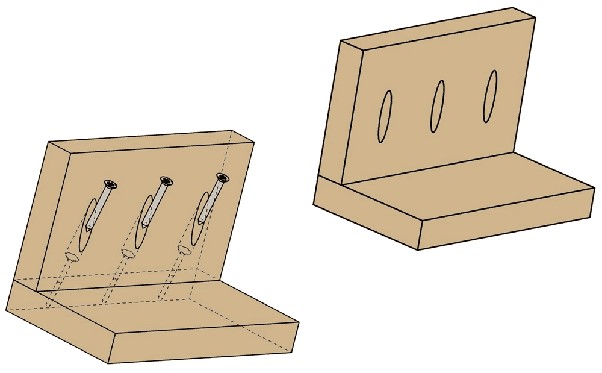
This is a quick and efficient technique. It involves drilling an angled hole through one piece of wood and joining it to another with screws. This method is widely used in cabinet assembly, especially for face frames. It may not offer the same level of craftsmanship as traditional joinery, but it’s quick and easy to learn.
While it may seem like a modern invention, pocket hole joinery is an ancient technique. The method of making them has changed, but not the technique itself. Learn more about pocket hole joinery here.
Box Joints (Finger Joints)
Box joints, also known as finger joints, involve interlocking rectangular projections resembling fingers. Craftsmen use it to join corners of cabinets and drawers. Box joints provide a large gluing surface, enhancing stability and strength. They’re visually distinctive and add a unique aesthetic appeal to the finished piece.
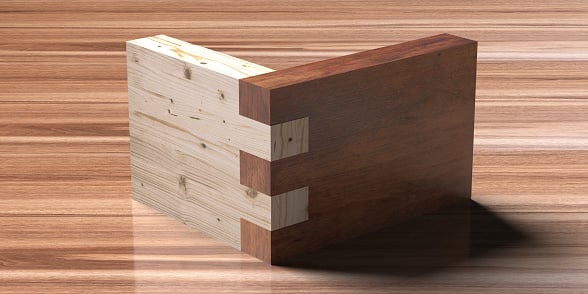
Prior to the invention of electric tools, box joints were hard to make and lacked the sturdiness of dovetail. Once making them became easier, it was popular for making boxes and crates for storage. Click here to learn how to make a box joint.
Rabbet Joints
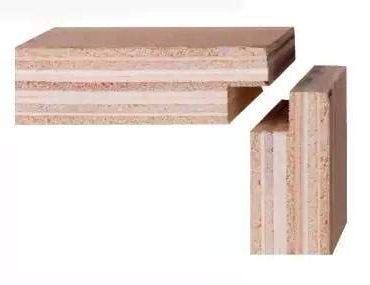
This technique involves removing a part of the wood to create a step-like recess. In cabinet backs, craftsmen frequently utilize this joint, wherein one piece of wood inserts into a groove or recess that they cut into another. It’s practical for adding strength and supporting the structure of cabinets.
Rabbet comes from the old French word rabat, meaning “a recess into a wall,” or rabattre, meaning “to beat down.”
Joinery construction is one of the details appraisers and art historians use to date antique items. They gain insight from the method and materials used. For an example, rabbet joints in drawer construction appeared in the late 1600s.
Half-Lap Joints
Half-lap joints remove half the thickness of each piece of wood to create a flush surface when joined. It’s easy to reinforce and reduces the visibility of the end grain. Unlike other techniques, this joint must be reinforced for strength and durability.
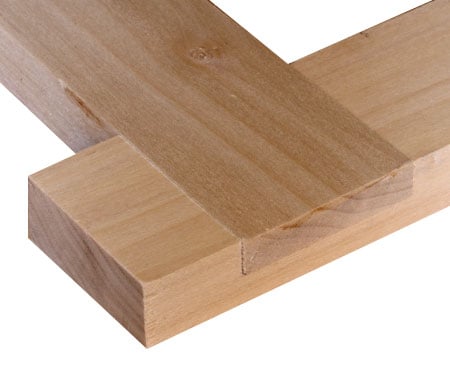
It remains popular for making picture frames, cabinets, and structural framing. The lack of visual appeal makes it ideal for minimalist or rustic design.
Do you have a favorite cabinet joinery technique?
Choosing joinery techniques depends on intended use and preference. Traditional methods like dovetail offer timeless craftsmanship. Modern approaches, like biscuit joints, provide efficiency and speed in production. A combination of these techniques can result in well-crafted and durable cabinets.
Some techniques are easier to learn than others, though. Do you have a favorite technique? Which of these joiners did you learn first?
Connect with us on social media, and tell us what you thought about the article!
Further Reading
10 Useful Features Your Kitchen Design Renovation Must Have
How to Take Beautiful Photos for Your DIY Project
